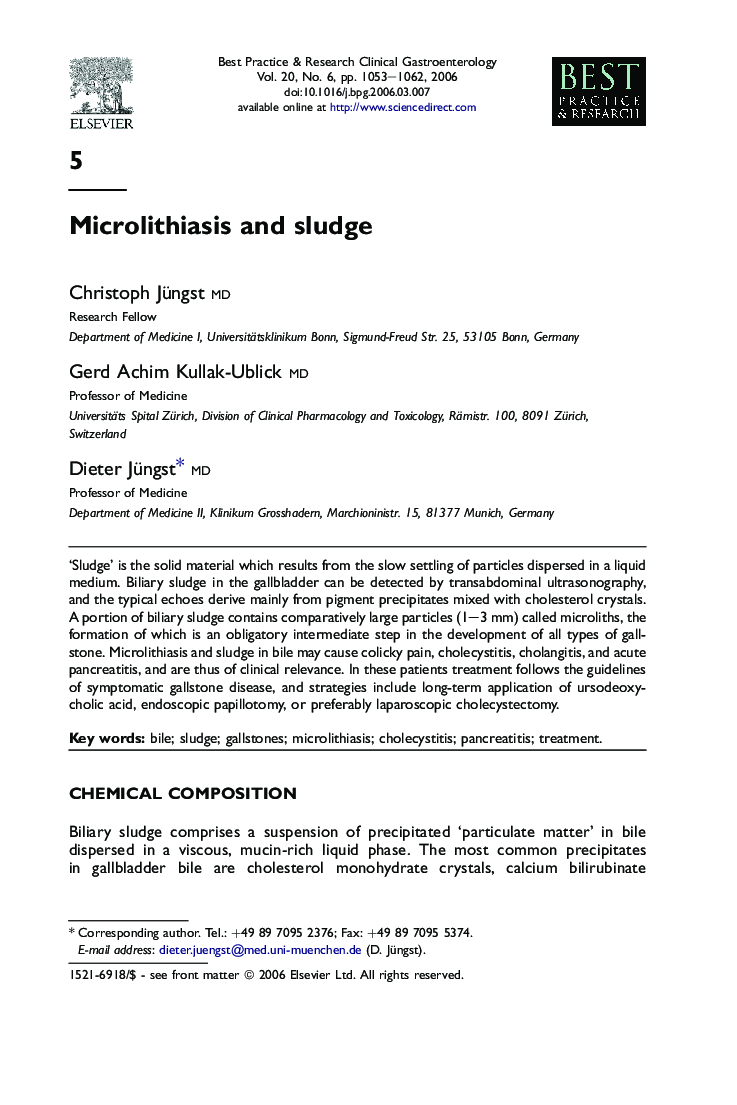| Article ID | Journal | Published Year | Pages | File Type |
|---|---|---|---|---|
| 3254842 | Best Practice & Research Clinical Gastroenterology | 2006 | 10 Pages |
‘Sludge’ is the solid material which results from the slow settling of particles dispersed in a liquid medium. Biliary sludge in the gallbladder can be detected by transabdominal ultrasonography, and the typical echoes derive mainly from pigment precipitates mixed with cholesterol crystals. A portion of biliary sludge contains comparatively large particles (1–3 mm) called microliths, the formation of which is an obligatory intermediate step in the development of all types of gallstone. Microlithiasis and sludge in bile may cause colicky pain, cholecystitis, cholangitis, and acute pancreatitis, and are thus of clinical relevance. In these patients treatment follows the guidelines of symptomatic gallstone disease, and strategies include long-term application of ursodeoxycholic acid, endoscopic papillotomy, or preferably laparoscopic cholecystectomy.
